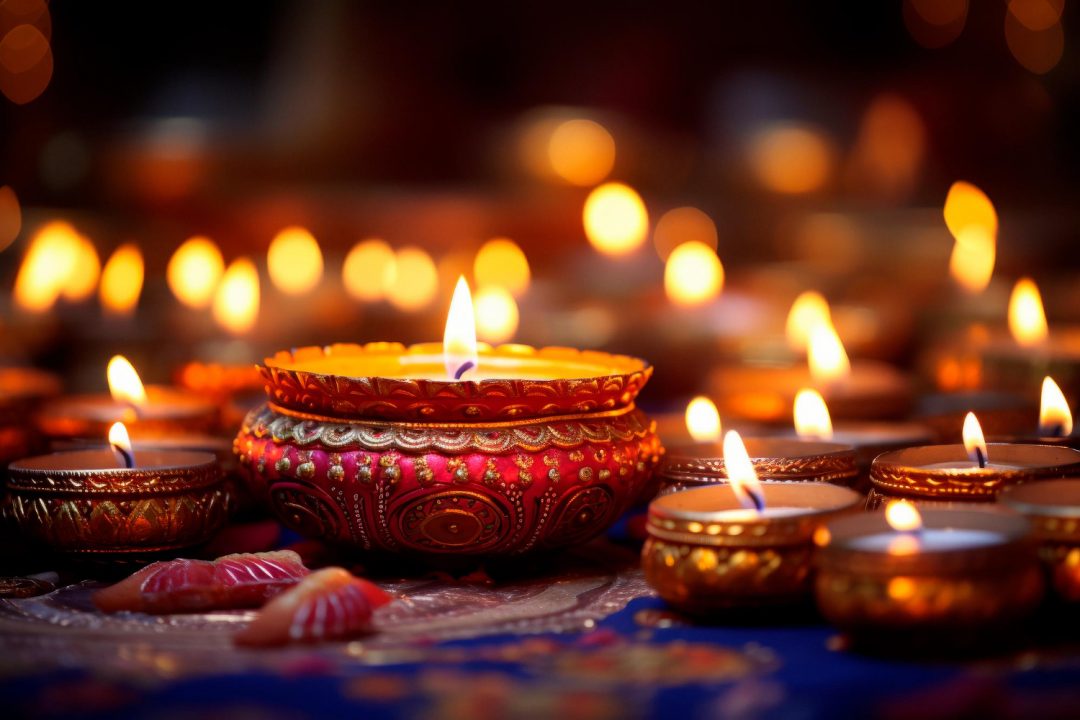In the vibrant tapestry of Indian culture, few objects capture the essence of tradition and spirituality quite like the diya. These small, unassuming oil lamps have been lighting up homes, temples, and festivals for millennia, serving as beacons of hope, faith, and celebration. From the simple clay diya to the more elaborate brass diya, these lamps play a pivotal role in Hindu rituals, especially during Diwali, the festival of lights.
This article delves into the fascinating world of diyas, exploring their rich history, cultural significance, and the various forms they take. We’ll journey through bustling Indian markets during Diwali, where countless diyas transform cities into breathtaking oceans of light. Along the way, we’ll uncover the artistry behind crafting these Diwali lamps, their symbolic meaning, and how they continue to evolve in our modern world.
The Rich Heritage of Diyas
Origins of the Indian Diya
The use of diyas dates back to ancient times, with archaeological evidence suggesting their presence in the Indus Valley Civilization. These early lamps were simple clay vessels, often hand-molded and unadorned. Over centuries, they evolved in design and material, but their fundamental purpose remained unchanged: to provide light and serve as a symbol of divine presence.
Spiritual Significance of the Diya Lamp
In Hindu philosophy, light represents knowledge, wisdom, and divine consciousness. Lighting a diya is more than just a practical act; it’s a spiritual practice that:
- Dispels darkness: Both literally and metaphorically, the diya’s flame pushes back the shadows of ignorance and negativity.
- Invites divine blessings: The light is believed to attract positive energies and deities into one’s home or sacred space.
- Represents the inner light: It serves as a reminder of the divine spark within each individual, encouraging self-reflection and spiritual growth.
- Symbolizes devotion: The offering of light is a gesture of reverence and gratitude to the divine, connecting the worshipper to higher realms of consciousness.
Varieties of Diyas and Diwali Lamps
Traditional Clay Diyas
The most common and perhaps most beloved form of diya remains the simple clay lamp. These are typically:
- Hand-crafted by skilled potters using techniques passed down through generations
- Small, shallow bowls with a pinched spout to hold the cotton wick
- Often left unglazed, embracing their natural earthen appearance and texture
- Considered eco-friendly as they’re biodegradable and return to the earth after use
During Diwali, streets and markets overflow with towering stacks of these humble yet beautiful lamps. Their earthy scent mingles with the aromas of festive sweets and incense, creating an unforgettable sensory experience that heralds the arrival of the most anticipated festival in the Hindu calendar.
Brass Diyas: Timeless Elegance
Brass diyas hold a special place in Indian households, prized for their durability and lustrous beauty. These lamps:
- Are often passed down through generations as cherished family heirlooms
- Come in a wide variety of designs, from simple bowls to intricate figurative shapes depicting deities or auspicious symbols
- May feature engravings or inlaid work with precious stones, adding to their value and beauty
- Are considered particularly auspicious due to the metal’s association with purity and prosperity in Hindu tradition Caring for Brass Diyas
To keep brass diyas shining bright for years to come:
- Clean regularly with a soft, dry cloth to remove dust and oil residue
- Polish occasionally with a mixture of lemon juice and baking soda to restore shine
- Store in a dry place to prevent tarnishing and oxidation
- Apply a thin layer of mineral oil after cleaning to maintain luster and protect the surface Diyas for Diwali: Festival of Lights Extraordinaire
Diwali, the most important festival in the Hindu calendar, is when diyas truly take center stage. During this five-day celebration:
- Millions of diyas adorn homes, streets, and public spaces, creating a mesmerizing spectacle
- Special Diwali diyas are created, often more ornate or colorful than everyday lamps
- Floating diyas are set adrift on rivers and lakes, creating magical reflections that seem to stretch to infinity
- Homes and businesses compete to create the most beautiful and elaborate diya displays, turning entire neighborhoods into wonderlands of light Innovative Diwali Lamp Designs
Modern artisans have begun reimagining traditional diyas for contemporary tastes and lifestyles:
- Electric diyas that mimic the flicker of real flames, providing a safe alternative for homes with children or pets
- LED diya strings for easy and quick decoration of large spaces
- Scented diyas that combine light with aromatherapy, filling homes with festive fragrances
- Artisanal diyas made from materials like glass, ceramic, or recycled materials, appealing to eco-conscious consumers
The Art of Crafting Diyas
Traditional Clay Diya Making: A Timeless Craft
The process of creating clay diyas is an art form that has been passed down through generations, connecting modern celebrants with ancient traditions:
- Clay selection: Potters choose fine, pliable clay that can withstand the heat of the flame without cracking.
- Shaping: Using a potter’s wheel or hand-molding techniques, the basic form is created with practiced hands that know just how thick to make the walls and how to shape the spout.
- Detailing: Some artisans may add decorative elements or patterns at this stage, pressing designs into the soft clay or attaching small embellishments.
- Drying: The shaped diyas are left to dry in the sun, a process that can take several days depending on the weather.
- Firing: Once dry, the diyas are carefully arranged in kilns and fired at high temperatures to harden them and make them durable enough to hold oil.
- Finishing touches: While many diyas are left in their natural state, some may be painted or glazed for added beauty and water resistance. The Craftsmanship of Brass Diyas: Metalwork Mastery
Creating brass diyas involves a different set of skills, combining ancient techniques with modern precision:
- Design: Artisans first create detailed designs, often inspired by religious iconography, nature, or geometric patterns.
- Mold making: A mold is created based on the design, usually made from sand or clay.
- Casting: Molten brass is carefully poured into the mold and allowed to cool and solidify.
- Refining: Once removed from the mold, the rough diya is filed and smoothed to remove any imperfections from the casting process.
- Engraving and detailing: Intricate patterns may be etched into the surface using specialized tools, requiring steady hands and years of practice.
- Polishing: The diya is buffed to a high shine using progressively finer abrasives until it gleams.
- Final touches: Any additional embellishments, such as gemstones or colored enamel, are added to complete the piece.
Lighting and Maintaining Diyas: Keeping the Flame Alive
To honor the tradition and ensure safety, proper lighting and care of diyas is essential:
How to Light a Diya: A Sacred Ritual
- Choose the right oil: Traditionally, ghee (clarified butter) or sesame oil is used for their purity and pleasant aroma.
- Prepare the wick: Cotton wicks work best, trimmed to about half an inch above the oil level to prevent smoking.
- Fill with oil: Add oil until it nearly reaches the rim, but don’t overfill to prevent spills.
- Light with care: Use a long matchstick or lighter to avoid burns, and light the wick gently.
- Place thoughtfully: Ensure the diya is on a stable, heat-resistant surface away from flammable materials and drafts. Diya Maintenance Tips: Preserving Beauty and Function
- Clean regularly: Remove soot and old oil to keep the diya looking fresh and prevent clogging of the wick.
- Replace wicks: Use fresh wicks for each use or when they become too short to draw oil effectively.
- Store properly: Keep in a dry place to prevent rusting (for metal diyas) or cracking (for clay diyas).
- Replenish oil: Add oil as needed to keep the flame burning steadily throughout your ritual or celebration.
Conclusion
From the humble clay diya to the resplendent brass lamp, these vessels of light carry within them centuries of tradition, spirituality, and artistry. As we light diyas for Diwali or any other occasion, we connect with a practice that has illuminated homes and hearts for countless generations. Whether you cherish the earthy simplicity of a traditional clay diya or the enduring elegance of a brass lamp, each flicker of the flame reminds us of the enduring power of light to inspire, unite, and uplift. In our fast-paced modern world, diyas continue to shine brightly, bridging the past and present, and inviting us all to pause and bask in their warm, hopeful glow.

